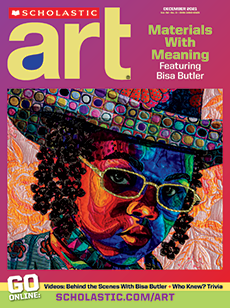Takashi Murakami (taa-kah-shee mu-rah-kaa-mee) calls himself an “anime otaku”—an “anime geek”—interested in animated films that originated in Japan. The artist, born in Tokyo, Japan, in 1962, eventually created a new artistic style inspired by this early interest. He soon became an international star with a distinct brand—and he discovered he could use his fame to support emerging artists.
Takashi Murakami (taa-kah-shee mu-rah-kaa-mee) was born in Tokyo, Japan, in 1962. He calls himself an “anime geek.” As a kid, the artist fell in love with anime, a type of Japanese animation. Murakami’s interest in anime later inspired him to create a new type of art. He quickly became known around the world, and now he uses his fame to help other emerging—new—artists.
